
To the lecture and exhibition of RCR Arquitectes in České Budějovice
On Wednesday, April 1, the weather was perfect for April Fools' Day. However, it would have been quite an unsuccessful prank. Many of us had traveled to České Budějovice from across the country. Michal Škoda, however, does not allow any doubts and confirms with each event that the Gallery of Contemporary Art and Architecture in České Budějovice is among the most inventive spaces dedicated to architectural exhibitions. In April of this year, the gallery is hosting an exhibition by the trio of Spanish architects Rafael Aranda, Carme Pigem, and Ramon Vilalta from the thirty-thousand-strong town of Olot in the Catalan province of Girona. Long-time friends from the Barcelona ETSAV (Escola Tècnica Superior d'Arquitectura del Vallès) decided to return to their native Olot, hidden in the beautiful nature under the Pyrenees, after their studies to establish their own studio in 1988, focusing primarily on local projects that over time began to attract attention from all over the world.
The ongoing exhibition 'The Intangible Tangible/Nehmotné hmotným' fits into the concept of the RCR triptych and thus connects the House of Art in České Budějovice with prestigious Barcelona institutions such as Palau Robert and Santa Mònica. While the historic Palau Robert object recently opened the exhibition 'Sdílená kreativita / Shared creativity' (March 26 – September 13, 2015), highlighting nearly three decades of the professional and life synergy of the trio of architects, the cultural center Santa Mònica is preparing a show 'Papíry / Papers' (May 19 – September 13, 2015) focused on the unmistakable handwriting and capturing ideas on paper using brush strokes with ink.
RCR first lectured in the Czech Republic on March 14, 2014, when Carme Pigem presented a twenty-minute contribution at the Liberec conference Architecture Outside the Centers. That RCR deserved more space was heeded a year later on April 1, 2015, when the Catalan architect Carme Pigem Barceló gave a lecture at 4:00 PM in the student church of St. Family in České Budějovice. This festive space was renovated three months ago according to a project by Josef Pleskot. The translation from Spanish was provided by the Slovak architecture theorist Mária Topolčanská, who has long been affiliated with the Barcelona ETSAB, while RCR studied at ETSAV, which is a school approximately 10 kilometers from Barcelona hidden behind the mountains, focusing more on landscape design, which is likely a good key to understanding RCR projects conceived as a continuous landscape. Likewise, the entire nearly thirty-year body of work of friends from their student days (Ramon and Rafael even from childhood) can be understood as a smoothly winding path with a shared view of the assignment.
Carme Pigem opened by presenting the reconstruction of a row house in Olot, built in 2011 by one of the office's partners. Only the shell of the historic house remains. The cold, dim interior space, however, retains airiness and communicativeness. They also redesigned the Espai Barberí foundry in the middle of Olot for their working environment. The sprawling complex, originally used for casting church bells and handmade sculpting, is now a place where projects for around the world are born in an industrial atmosphere, and they also annually hold summer student workshops lab·a (Laboratorio de Arquitectura y Paisaje).
At the end of the lecture, Carme Pigem admitted that their work only gained broader attention in 2003 when their first monograph (115/116) was published by the Madrid publisher El Croquis, where they had to share the space with two other offices, FOA and Mansilla & Tuñón, but since then El Croquis dedicated two more individual issues (138 and 162) to them. RCR brought to České Budějovice the current issue (AV 175) from another significant Madrid publisher, Arquitectura Viva, which is entirely dedicated to eighteen contemporary foreign projects mostly in France and Belgium.
The subsequent discussion arrived at the topic of success in public competitions, which, among other things, were the reason for the establishment of the studio and their first public contract. RCR has long been successful, winning one to two competitions each year, which they subsequently realize.
RCR finds inspiration not only in the lush landscape of extinct volcanoes but also in the more distant examples of the work of masters Ludwig Mies van der Rohe and Louis Kahn, as well as in traditional Japanese houses, which may seem too distant for Europeans, but the ancient Japanese approach to linking interiors with the surrounding landscape has been a model for many modernists of the 20th century.
At 6:00 PM, the opening of the exhibition in the Gallery of Contemporary Art and Architecture followed, where the series of four photographers is exhibited: Hisao Suzuki, Emiliano Roia, Pep Sau, and Marc Checinski. Each photographer, using their means, tries to capture and convey the atmosphere of the place, where architecture does not necessarily have to play the primary role. RCR, in fact, is interested in the beauty of things and the soul of architecture, which cannot simply be extracted from life. Nevertheless, the photographers managed to materialize the feelings from visiting the places designed by RCR and bring them into the gallery. The RCR exhibition in České Budějovice is open until Sunday, May 3, 2015.
In conclusion, I would like to add a few of my own observations from our first trip to Spain, which we took with the editorial board of archiweb in 2006. We slipped through the Pyrenees via Andorra, and the first stop on Spanish territory was precisely Olot. The volcanic landscape of La Garrotxa was completely different from what we had imagined about Costa Ibérica. During two days, we experienced picnics in a meadow by the changing rooms on the bank of the River El Fluvià, participated in an honorary lap on the athletics oval of the Tussols/Basil stadium. On another visit, RCR already had several landscape modifications using corten steel, quirky family houses behind them, and each new project was eagerly anticipated. The only thing I failed to do even on the third attempt was to have lunch in the famous restaurant Les Cols, which provides yet another reason to return to Olot.
The ongoing exhibition 'The Intangible Tangible/Nehmotné hmotným' fits into the concept of the RCR triptych and thus connects the House of Art in České Budějovice with prestigious Barcelona institutions such as Palau Robert and Santa Mònica. While the historic Palau Robert object recently opened the exhibition 'Sdílená kreativita / Shared creativity' (March 26 – September 13, 2015), highlighting nearly three decades of the professional and life synergy of the trio of architects, the cultural center Santa Mònica is preparing a show 'Papíry / Papers' (May 19 – September 13, 2015) focused on the unmistakable handwriting and capturing ideas on paper using brush strokes with ink.
RCR first lectured in the Czech Republic on March 14, 2014, when Carme Pigem presented a twenty-minute contribution at the Liberec conference Architecture Outside the Centers. That RCR deserved more space was heeded a year later on April 1, 2015, when the Catalan architect Carme Pigem Barceló gave a lecture at 4:00 PM in the student church of St. Family in České Budějovice. This festive space was renovated three months ago according to a project by Josef Pleskot. The translation from Spanish was provided by the Slovak architecture theorist Mária Topolčanská, who has long been affiliated with the Barcelona ETSAB, while RCR studied at ETSAV, which is a school approximately 10 kilometers from Barcelona hidden behind the mountains, focusing more on landscape design, which is likely a good key to understanding RCR projects conceived as a continuous landscape. Likewise, the entire nearly thirty-year body of work of friends from their student days (Ramon and Rafael even from childhood) can be understood as a smoothly winding path with a shared view of the assignment.
Carme Pigem opened by presenting the reconstruction of a row house in Olot, built in 2011 by one of the office's partners. Only the shell of the historic house remains. The cold, dim interior space, however, retains airiness and communicativeness. They also redesigned the Espai Barberí foundry in the middle of Olot for their working environment. The sprawling complex, originally used for casting church bells and handmade sculpting, is now a place where projects for around the world are born in an industrial atmosphere, and they also annually hold summer student workshops lab·a (Laboratorio de Arquitectura y Paisaje).
At the end of the lecture, Carme Pigem admitted that their work only gained broader attention in 2003 when their first monograph (115/116) was published by the Madrid publisher El Croquis, where they had to share the space with two other offices, FOA and Mansilla & Tuñón, but since then El Croquis dedicated two more individual issues (138 and 162) to them. RCR brought to České Budějovice the current issue (AV 175) from another significant Madrid publisher, Arquitectura Viva, which is entirely dedicated to eighteen contemporary foreign projects mostly in France and Belgium.
The subsequent discussion arrived at the topic of success in public competitions, which, among other things, were the reason for the establishment of the studio and their first public contract. RCR has long been successful, winning one to two competitions each year, which they subsequently realize.
RCR finds inspiration not only in the lush landscape of extinct volcanoes but also in the more distant examples of the work of masters Ludwig Mies van der Rohe and Louis Kahn, as well as in traditional Japanese houses, which may seem too distant for Europeans, but the ancient Japanese approach to linking interiors with the surrounding landscape has been a model for many modernists of the 20th century.
At 6:00 PM, the opening of the exhibition in the Gallery of Contemporary Art and Architecture followed, where the series of four photographers is exhibited: Hisao Suzuki, Emiliano Roia, Pep Sau, and Marc Checinski. Each photographer, using their means, tries to capture and convey the atmosphere of the place, where architecture does not necessarily have to play the primary role. RCR, in fact, is interested in the beauty of things and the soul of architecture, which cannot simply be extracted from life. Nevertheless, the photographers managed to materialize the feelings from visiting the places designed by RCR and bring them into the gallery. The RCR exhibition in České Budějovice is open until Sunday, May 3, 2015.
In conclusion, I would like to add a few of my own observations from our first trip to Spain, which we took with the editorial board of archiweb in 2006. We slipped through the Pyrenees via Andorra, and the first stop on Spanish territory was precisely Olot. The volcanic landscape of La Garrotxa was completely different from what we had imagined about Costa Ibérica. During two days, we experienced picnics in a meadow by the changing rooms on the bank of the River El Fluvià, participated in an honorary lap on the athletics oval of the Tussols/Basil stadium. On another visit, RCR already had several landscape modifications using corten steel, quirky family houses behind them, and each new project was eagerly anticipated. The only thing I failed to do even on the third attempt was to have lunch in the famous restaurant Les Cols, which provides yet another reason to return to Olot.
The English translation is powered by AI tool. Switch to Czech to view the original text source.
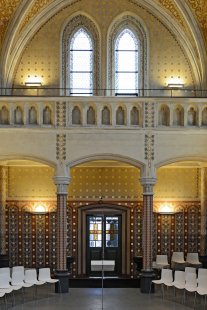
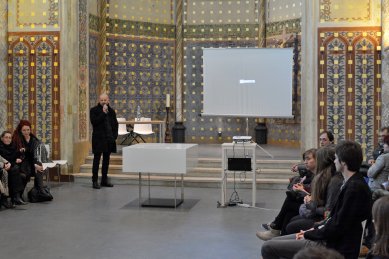
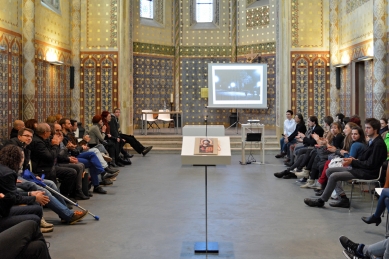
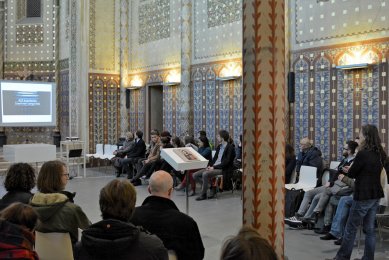
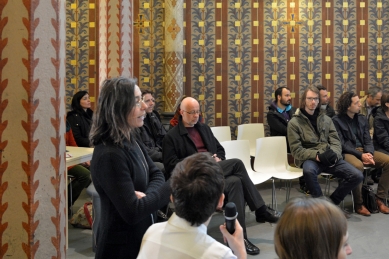
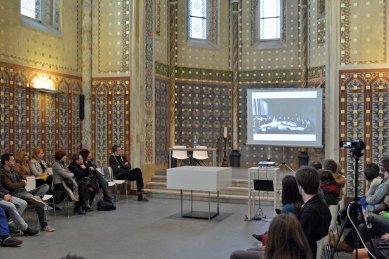
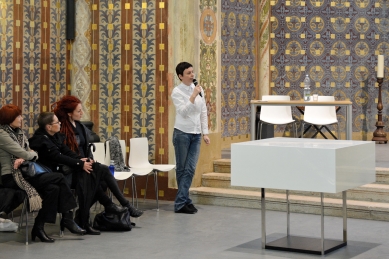
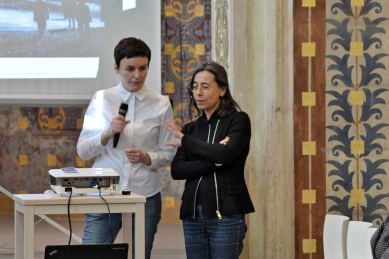
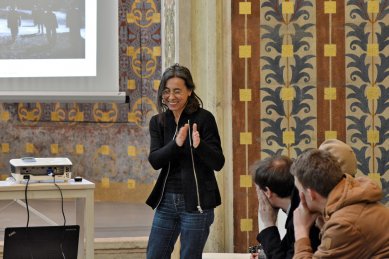
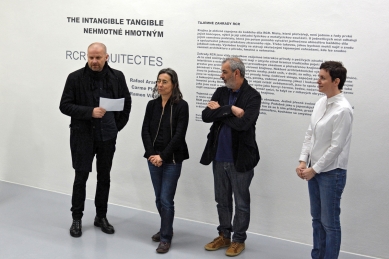

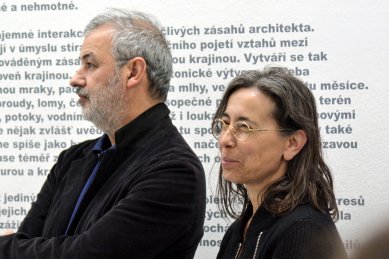
1 comment
add comment
Subject
Author
Date
...
Daniel John
09.04.15 10:03
show all comments












